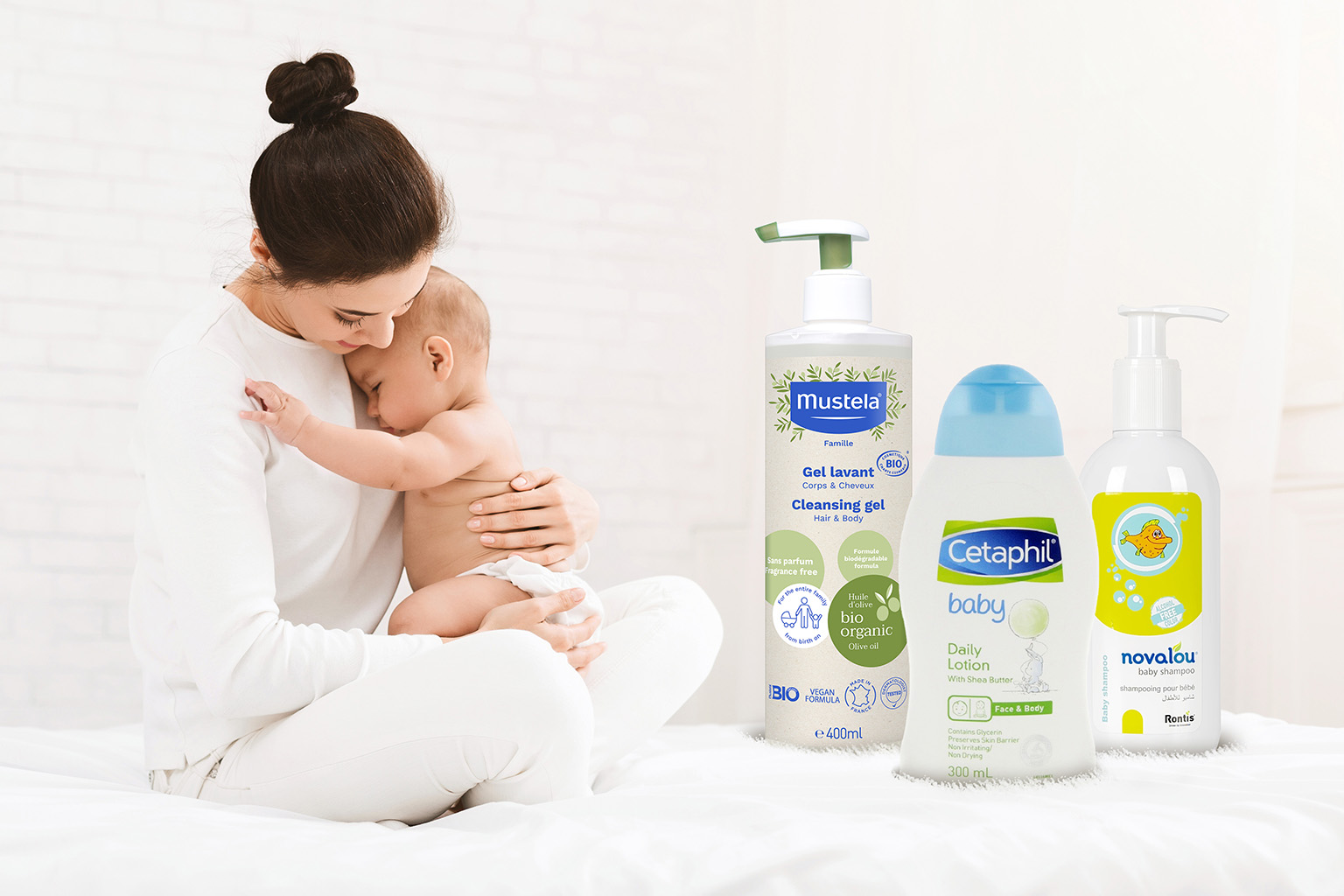Adol for Children: A Comprehensive Guide to Safely Relieving Pain and Fever and How to Use It Correctly
Content
- Introduction
- When Does a Child Need a Pain Reliever?
- What Is Adol for Children?
- How Does Adol Work?
- How to Use Adol for Children
- When Should You Consult a Doctor?
- A Mother’s Guide to Caring for a Sick Child and Using Adol Safely
- What Are the Side Effects of Adol for Children?
- Conclusion
Introduction
It is natural for children in their early stages of growth to experience minor health issues such as fever or pain, as their immune systems are still developing and need time to strengthen and better fight off illnesses. Teething, colds, and daily fatigue can also cause discomfort, making children more sensitive and irritable. During these moments, parents seek a safe solution that helps quickly relieve symptoms and restore the child’s comfort.
Among the commonly used medications many parents rely on to ease pain and reduce fever is Adol for children, which contains paracetamol. It is widely known for its suitability for children and its ease of use, making it a reliable choice for managing these simple symptoms that frequently occur in young children.
When Does a Child Need a Pain Reliever?
Not every fever or pain requires medication, but there are clear situations in which a pain reliever is necessary to help the child feel more comfortable. However, it is important to consult a doctor if you are unsure about the cause of the pain or if the symptoms seem unusual, to ensure the pain reliever is used correctly and to determine whether the child needs additional treatment. Among the main reasons to give a pain reliever like Adol are:
High Fever
Fever is one of the most common reasons. When a child’s temperature exceeds 38°C, it may cause significant discomfort, especially if accompanied by chills or fatigue.
Teething Pain
Teething may cause:
- Gum pain
- Continuous crying
- Difficulty sleeping
- Loss of appetite
In these cases, a pain reliever helps reduce the pain and allows the child to sleep better.
Colds and Seasonal Viruses
A child may experience body aches, headaches, congestion, or fatigue. A pain reliever can help ease these symptoms.
Ear and Throat Infections
The child may show clear discomfort, hold their ear, or refuse food due to pain, making a pain reliever helpful until main treatment begins.
After Vaccinations
Mild fever or localized pain may occur at the injection site. A pain reliever can be used if discomfort affects the child’s sleep or activity.
Mild Pain from Falls or Strain
Such as mild muscle pain or small bruises that do not require medical treatment.
What Is Adol for Children?
Adol is a medication that contains paracetamol, the most widely used ingredient globally to reduce fever and relieve pain in children and adults.
Adol is available in several forms suitable for children:
- Syrup
- Suppositories
- Drops (for infants)
It is known for being:
- Gentle on the child’s stomach
- Non-irritating
- Safe when used with the correct dose
- Suitable for most cases that require pain or fever relief
How Does Adol Work?
Adol works on two main levels inside the body:
1. Reducing Fever
Paracetamol acts on the brain’s temperature-regulating centers, helping return body temperature to normal.
This makes it the best option for fever in children, as it works gently and begins acting within 30–45 minutes.
2. Relieving Pain
Paracetamol reduces the nerve signals that transmit pain to the brain, lowering the sensation of pain.
It is effective for:
- Teething pain
- Headache
- Muscle pain
- Post-vaccination pain
- Ear and throat infections
Is Adol an Anti-Inflammatory?
No, Adol is not an anti-inflammatory.
Its main function is to relieve pain and reduce fever without affecting inflammation like ibuprofen and similar medications.
How to Use Adol for Children
Adol must be used correctly to ensure its effectiveness and the child’s safety. It is always recommended to follow the instructions on the package or those given by a doctor or pharmacist. The appropriate dose typically depends on the child’s weight and age.
It is also essential to adhere to the allowed number of doses per day and avoid exceeding the daily limit, even if the fever persists. Always use the measuring tool provided with the medication, such as the syringe or measuring cup, for accurate dosing and avoid household spoons that can lead to incorrect doses.
Adol should be given only when the child has clear pain or fever that affects their comfort—not routinely or without reason. The appropriate form should also be chosen according to the child’s age and condition:
Drops for infants, syrup for older children, and suppositories for cases where the child is vomiting or unable to take oral medication.
When Should You Consult a Doctor?
Use this guide to identify situations in which you must consult a doctor immediately:
Fever-Related Cases
- Fever persisting for more than 3 days despite using Adol
- Infants younger than 3 months with a temperature of 38°C or more
Pain-Related Cases
- Severe pain not improving within 24 hours
- Continuous and unusual crying
- Pain accompanied by swelling or rash
Serious Warning Signs
Seek medical help immediately if the child shows:
- Difficulty breathing
- Severe fatigue or unusual drowsiness
- Signs of dehydration (such as reduced urination or dry mouth)
- Repeated vomiting
- Seizures
- Spreading rash
- Extreme paleness or cold limbs
Other Cases
- Children with liver disease
- If the child took an overdose
- If the child is taking other medications that may interact with paracetamol
A Mother’s Guide to Caring for a Sick Child and Using Adol Safely
When a child becomes ill, they become more sensitive and require special care that helps them feel comfortable until they recover. It is important for the mother to remain calm and observe the child closely, as her actions during this period significantly affect the child’s mood and comfort.
- The first step is to carefully monitor the child’s symptoms. A child who has mild fever but still plays or eats normally may not need a pain reliever immediately, while a tired, lethargic child who cannot sleep or eat may require quicker intervention. Keeping the child in a quiet, comfortable place with reduced noise and soft lighting helps them relax.
- Fluids are essential during illness, especially with fever, as dehydration can occur quickly. Older children can be offered water, while infants may need more frequent feedings or fluids appropriate for their age.
A warm bath or gentle warm compresses on the forehead can help reduce fever—cold water should be avoided as it can increase body temperature instead of lowering it. - Adequate sleep is an important part of recovery. A sick child needs more rest than usual, so creating a comfortable atmosphere, ensuring proper ventilation, and maintaining a suitable room temperature are important. Loss of appetite is normal during illness, so the child should not be forced to eat; instead, light and easy-to-digest meals can be offered when they are ready.
- Regarding Adol, it should be given only when there is clear pain or fever that affects the child’s comfort. The instructions on the package must always be read, and the correct concentration chosen for the child’s age and weight. No other medication containing paracetamol should be given at the same time, and doses should not be given too close together. In case of any doubt about dosing or if symptoms persist, consulting a doctor is recommended.
- Despite Adol being safe when used properly, there are signs that require immediate medical attention, such as persistent fever, breathing difficulties, continuous vomiting, dehydration, unusual lethargy, or a spreading rash. These may indicate a condition that requires medical evaluation—not just a pain reliever.
What Are the Side Effects of Adol for Children?
Adol is considered safe for children when used at the correct dose, and side effects are rare. However, some children may experience mild to moderate reactions, and parents should observe any changes.
Common side effects may include:
- Mild stomach discomfort such as nausea or slight abdominal pain
- Tiredness or sleepiness after taking the medication
- Temporary loss of appetite or slight discomfort
Although rare, more serious side effects may occur, especially with overdose, including:
- Yellowing of the skin or eyes
- Dark urine
- Severe or persistent vomiting
- Severe fatigue or difficulty waking up
- Rash or facial swelling (possible allergic reaction)
If any of these symptoms appear, stop the medication immediately and consult a doctor.
Conclusion
In conclusion, Adol is one of the safest and most effective options for relieving pain and reducing fever in children when used correctly. Despite its simplicity, parents’ awareness of symptoms, careful monitoring, and consulting a doctor when in doubt remain essential parts of proper child care. With the right guidance and attention to the child’s comfort and needs during illness, parents can manage daily symptoms confidently, ensuring their child’s safety and access to proper treatment at the right time.




